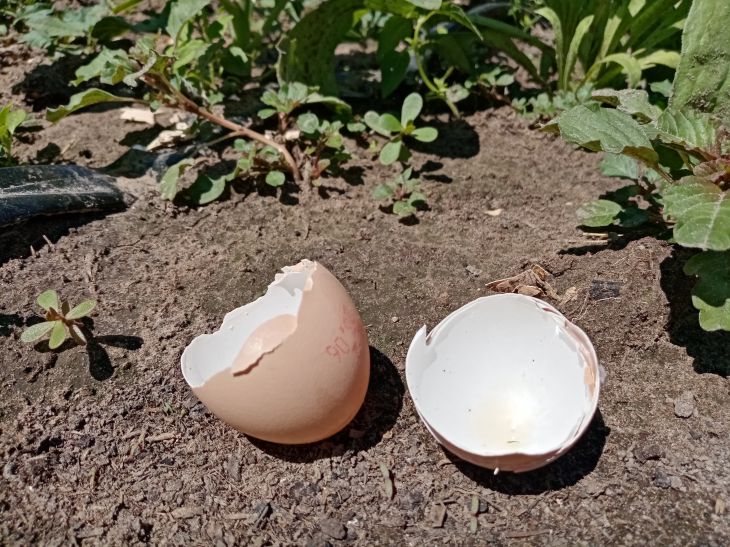Super product or ordinary garbage: should a summer resident “save” eggshells
Gardeners are divided into two types. Some enjoy collecting eggshells, considering them an excellent gardening tool.
Others see no point in preserving the hard shell of chicken eggs, preferring to use only mineral fertilizers.
Who is right? Should we "save" the shells to use them later on our summer cottage?
Or is this action still meaningless due to the low effectiveness of the product?
The answer is simple: the shells need to be collected. It is really a good fertilizer. In addition, it can be used for other purposes.

Eggshells as fertilizer
The hard shell of eggs contains many elements important for plants: calcium, zinc, manganese, etc.
Thus, crushed shells can be used to feed many garden crops. By the way, this product is also suitable for indoor plants.
Shells as a growth stimulant for seedlings
If you grind the collected eggshells so much that you get “flour”, you will get an ideal product for tomato or cabbage seedlings.
Shells for soil deoxidation
The calcium carbonate contained in the shell deoxidizes the soil quite well.
In addition, thanks to this natural product, the soil cover is also loosened.
Shells as mulch
A gardener who has managed to collect a lot of eggshells can use them as mulching material.
This mulch is ideal for cherries and sweet cherries.
Shells as a pest control agent
If you grind up the hard shell of eggs and mix the resulting mass with a small amount of vegetable oil, you will get the ideal bait for the mole cricket.
Place the mixture in a 3-cm hole and cover it with soil. After some time, the aforementioned large insect will be attracted by the oily smell, eat the bait and die.
And large eggshell fragments are an excellent remedy against slugs. Just place these pieces around the vulnerable plant. The gastropods will be injured by the sharp edges of the shell and will no longer pose a danger to the garden crop.
